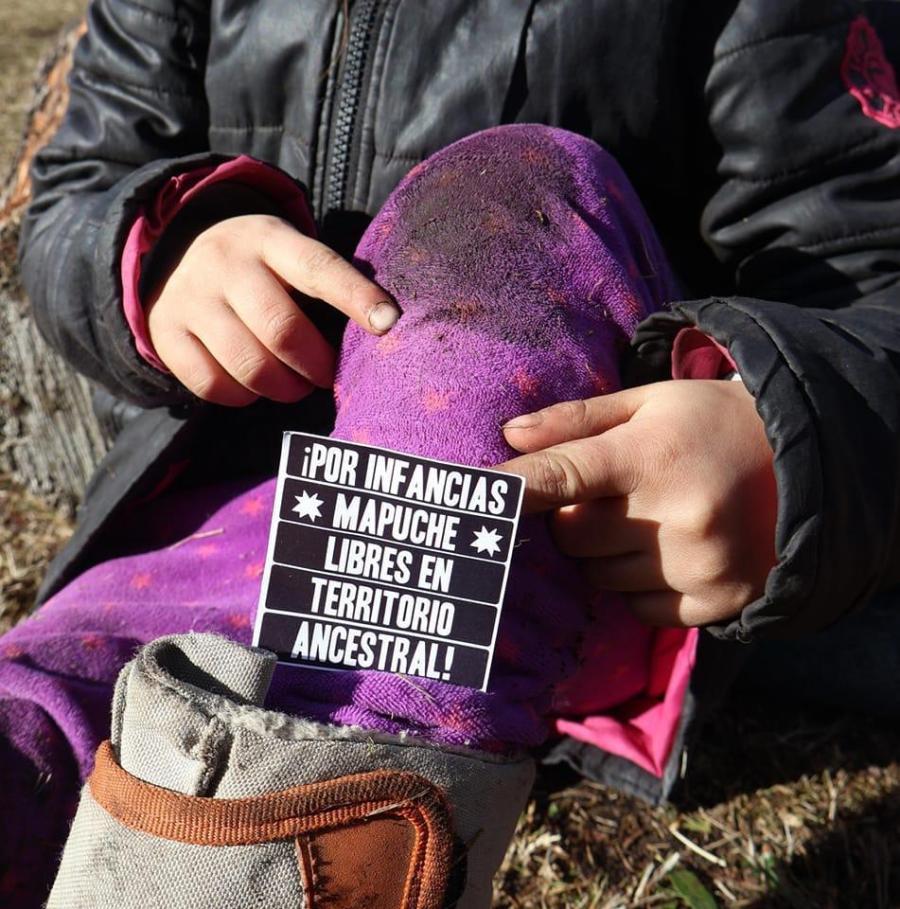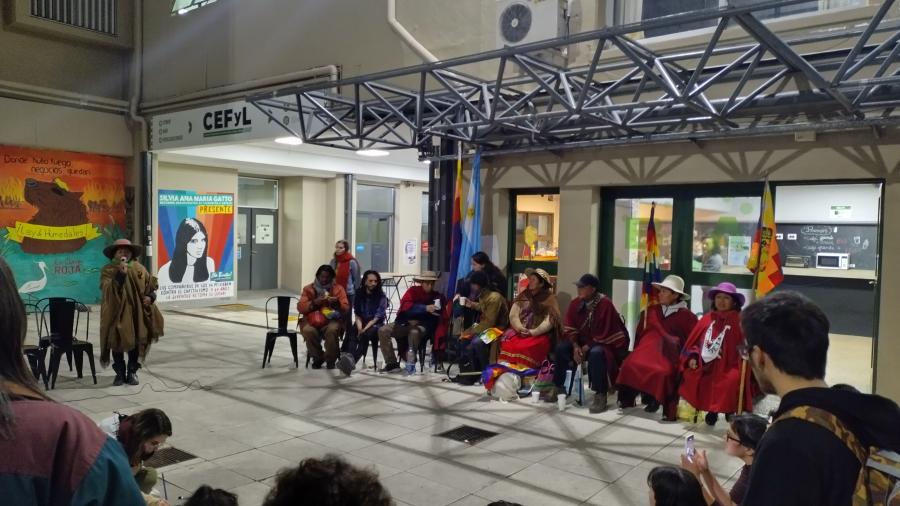During the first United Nations International Decade on the World’s Indigenous People (1995-2004), there were a number of positive developments for the world’s indigenous peoples. Many countries adopted legislation concerning land, resources, culture, language, education, justice, intellectual property rights, and in some instances, legal pluralism, autonomy, and self-governance. In 1989, just before the decade began, the International Labor Organization adopted Convention #169 on indigenous and tribal peoples, and since 1996 the U.N. Human Rights Commission has been discussing a Draft Declaration on the Rights of Indigenous Peoples (see pages 4 and 5). A similar process is underway in the Organization of American States. And indigenous people themselves have been increasing their contribution to such international forums.
Many countries in North and South America have in recent decades reformed their constitutions or enacted legislation related to indigenous peoples. In the past 20 years Argentina, Bolivia, Brazil, Colombia, Ecuador, Guatemala, Mexico, Nicaragua, Panama, Paraguay, Peru, Venezuela, and Canada have all carried out constitutional reforms in which some rights of indigenous peoples are recognized for the first time. But other countries in the region have not done so. Chile adopted a law on indigenous peoples in 1993, but two attempts to modify the constitution (in 2001 and 2005) failed to pass in the national Congress. The Peace Accord on Indigenous Rights and Culture that was signed in Guatemala in 1995 did not become entrenched in the country’s constitution, as was expected, because a popular referendum on this issue did not obtain the required majority.
There have been changes in other parts of the world as well, though more modest. Russia, the Philippines, and Cambodia have recently adopted laws regarding native peoples, and Malaysia has had a similar law on the books since 1954. In Africa a few countries, including Ethiopia, Cameroon, Uganda, and South Africa, now recognize indigenous peoples as such. The African Commission on Human and Peoples Rights has begun to take an interest in these issues and published a report in 2005 concerning indigenous peoples on the African continent.
Despite all these important legislative measures and institutional reforms, there is an “implementation gap” between the legislation and the daily realities for indigenous peoples. Concern about this gap led me, as the Special Rapporteur, to organize two expert meetings on these topics in 2005. This article summarizes some of the issues discussed at those meetings.
Indigenous peoples have learned over time, just as other marginalized and discriminated-against groups have learned, that they can claim their rights only through social struggle and democratic participation in the political process. For example, in New Zealand’s September 2005 elections, the recently created Maori Party won four seats in the Parliament as a result of Maori dissatisfaction with the Foreshore and Seabed Legislation enacted in 2004 (see page 32). In Ecuador, the indigenous Pachakutik party participated for a few months in a spurious government and suffered an internal crisis as a result. In December 2005 Bolivia elected for the first time in its history an Aimara peasant leader as president of the country, by a large majority (see page 12). President Evo Morales has announced that the Bolivian nation is soon to be “refounded” in a constitutional convention.
Despite these signs of change, the level of indigenous peoples’ participation in the political and economic life of their countries is still low, largely as a consequence of the peoples’ longstanding marginalization. In some countries, like Colombia and Venezuela, indigenous peoples have reserved seats in parliament; in others, like New Zealand, they have distinct electoral rolls. Yet if they stand for national elections at all, it is mostly within existing political party structures, where they are usually a minority and exercise only a little influence on party platforms, parliamentary committees, and legislative agendas.
Another concern is that local governments are not implementing international standards concerning indigenous rights, sometimes even after a state has ratified an international convention. Public officials may ignore such legislation altogether, and courts tend not to take it into account. Numerous reports indicate that countries that have signed and ratified the International Labor Organization’s Convention 169 are not actually applying it in concrete cases. Often there are inconsistencies between human rights legislation and laws relating to mining, water, forests or other natural resources. Resource laws like these often protect powerful special interests; as a result, the human rights of indigenous peoples are put on the back burner.
Sometimes the special departments that should be set up to carry out legislatively mandated human rights policies are not established or do not have clearly defined functions. The lack of trained personnel is another problem, and very frequently even after these units are established, they do not receive the resources they need to carry out their activities. Priorities seem to lie elsewhere.
Some countries recognize the right of indigenous peoples to enforce the law in their own traditional ways, but only when it applies to local matters. In general the courts do not favor indigenous jurisdiction. As a result, in many countries indigenous people (mainly youth) have higher incarceration rates than non-indigenous people, and they appear more often in the criminal-justice system. I have received many complaints about human rights violations against indigenous persons within the justice system. To deal with this sort of situation, Mexico has put in place a special program to liberate indigenous prisoners whose trials may have been tainted by discrimination, corruption, or simple legal sloppiness.
Throughout the world some court decisions are still informed by the racist and discriminatory opinions handed down by earlier generations of judges, or derived from legal scholarship that described indigenous peoples as savages, primitives, or barbarians. Many courts are mired in centuries-old concepts like terra nullius, a doctrine that denied indigenous peoples sovereignty over their lands, territories, and resources. They reflect the open or subtle affirmation of the racial and ethnic superiority of the descendants of the European colonists; and they endorse the premise that the cultural assimilation of indigenous people is not only inevitable but desirable. In such countries, a pluralist constitution is not enough; the judiciaries have to be reformed.
This situation is particularly unfortunate because in countries where native courts and indigenous jurisdictions are recognized and respected, evaluations show that they usually work well. In Peru, for example, local communities have set up “peasant patrols” to maintain order and justice. They have been so successful that a special law was adopted to allow them to function within the wider justice system. A similar system of “community police” operates in the indigenous communities of southern Mexico.
Judicial developments at the international level are equally important. New interpretations of the American Convention of Human Rights has led the Inter-American Court on Human Rights to hand down path-breaking decisions upholding the rights of indigenous communities against the state. The trouble is that governments are reluctant to comply with the court’s decisions. And the Inter-American system, unfortunately, is not prepared to deal effectively with noncompliance by member states. The Inter-American Commission of Human Rights has encountered similar problems.
At the United Nations level, a number of treaty bodies, such as the Human Rights Committee; the Committee on Economic, Social and Cultural Rights; the Committee on the Elimination of Racial Discrimination; and others have in recent years taken up the issues raised by indigenous peoples and have, in some cases, made recommendations to states against which complaints were filed. Being members in good standing of these U.N. bodies that they themselves created, some states are making efforts to maintain the human rights standards of indigenous peoples. Others, however, have chosen to disregard the work of these committees, and unfortunately the U.N. does not have mechanisms to enforce its own decisions. (Examples include an important case concerning the discriminatory effects of the Foreshore and Seabed Act in New Zealand that came before the CERD in 2005, and another on the land rights of the Western Shoshone in the United States.)
Even more serious in its effects on the rights of indigenous peoples is the increasing use by some states of anti-terrorist legislation to dismantle the legitimate social movements that demand indigenous peoples’ land rights, environmental rights, or development rights. This is not the only kind of legislation that tends to criminalize social movements, but it has the most threatening implications because of the severity of the accusations and the lengthy sentences convicted persons face.
The challenges addressed in the foregoing paragraphs must be faced at various levels. In my 2006 Report to the Commission on Human Rights, I make various recommendations to governments and to the United Nations system, including:
- Put in place practical measures to close the gap between legislation and its implementation.
- Improve coordination among government departments dealing with indigenous issues.
- Establish effective mechanisms of consultation between governments and indigenous peoples.
- Create independent commissions to monitor and evaluate such mechanisms.
- Form indigenous affairs committees in the parliaments to initiate and monitor legislation and budgets on indigenous matters.
- Implement constitutional reforms through adequate secondary legislation.
- Favor human rights legislation when laws are inconsistent.
- Incorporate international standards on the rights of indigenous peoples into domestic law. Include an agenda on indigenous rights in political parties’ electoral platforms in consultation with indigenous peoples.
- Apply international human rights standards when courts deal with indigenous peoples’ issues.
- Establish an ombudsman’s office (or its equivalent) for the rights of indigenous peoples, and make its recommendations obligatory on government authorities.
- Allow indigenous peoples’ organizations to train their members for effective lobbying of the various branches of government.
- Train public officials to deal with indigenous issues from an intercultural perspective.
All of these recommendations are aimed at ensuring the implementation of national and international human rights standards for the rights of indigenous peoples. This is the new challenge that must be addressed in the coming years if we are to move from rhetoric to practice in the protection of indigenous peoples’ rights.



